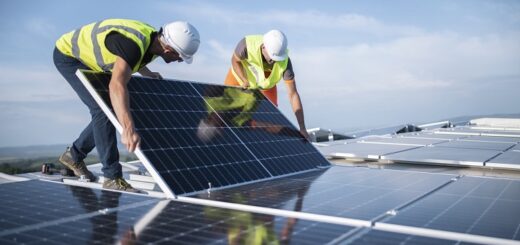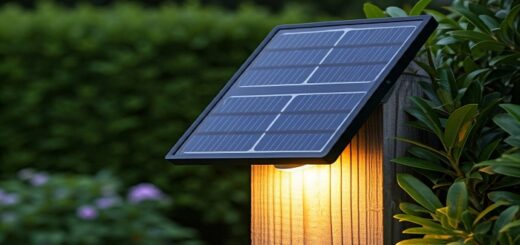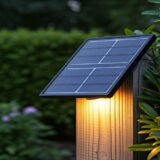What Type of Solar Panels Are Best for Residential?

What Type of Solar Panels Are Best for Residential
Solar energy is becoming more popular. Many homeowners want to save money and help the environment. Choosing the right solar panel is important. There are different types of solar panels available. Each has its own benefits and disadvantages. This article will help you understand what type of solar panels are best for residential use. What Type of Solar Panels Are Best for Residential?
Understanding Solar Panels
Before we dive into the types of solar panels, let’s understand how they work. Solar panels convert sunlight into electricity. They do this using photovoltaic (PV) cells. When sunlight hits these cells, it creates electricity. This electricity can power your home or be stored for later use.
Types of Solar Panels
There are three main types of solar panels to consider for your home:
- Monocrystalline Solar Panels
- Polycrystalline Solar Panels
- Thin-Film Solar Panels
Let’s discuss each type in detail.
1. Monocrystalline Solar Panels
Monocrystalline panels are made from a single crystal structure. This gives them a high efficiency rate.
Benefits of Monocrystalline Panels
- High Efficiency: These panels offer the highest efficiency, often ranging from 15% to 22%. This means they convert a higher percentage of sunlight into usable electricity.
- Space-Saving: Because of their high efficiency, they take up less space. This is great for homes with limited roof space.
- Longevity: They usually last longer than other types. Many come with warranties of 25 years or more.
- Aesthetically Pleasing: Monocrystalline panels are sleek and black in color. They look good on most rooftops.
Disadvantages of Monocrystalline Panels
- Cost: They are often the most expensive option. The higher efficiency comes at a higher price point.
- Performance in Shade: While they perform well in direct sunlight, their efficiency can drop significantly if shaded.
2. Polycrystalline Solar Panels
Polycrystalline panels are made from multiple crystal structures. They are the second most popular type of solar panel.
Benefits of Polycrystalline Panels
- Lower Cost: They are generally cheaper than monocrystalline panels. This makes them a good option for budget-conscious homeowners.
- Good Performance: They have decent efficiency rates, usually between 13% and 16%. While not as high as monocrystalline, they still perform well in various conditions.
- Less Energy to Produce: The manufacturing process uses less energy. This can be better for the environment.
Disadvantages of Polycrystalline Panels
- Lower Efficiency: They are less efficient than monocrystalline panels. This means more panels may be needed for the same energy output.
- Larger Space Requirement: More panels mean more roof space is required. This can be a disadvantage for smaller homes.
- Aesthetic Appeal: They have a bluish hue and a somewhat less sleek appearance than monocrystalline panels.
3. Thin-Film Solar Panels
Thin-film panels are made by layering thin sheets of photovoltaic material. These panels are lightweight and flexible.
Benefits of Thin-Film Panels
- Flexibility: They can be installed on various surfaces, including curved ones. This offers versatility for different types of homes.
- Lightweight: Thin-film panels are lighter than crystalline panels. This can be beneficial for homes with less robust roofs.
- Lower Cost: They are often cheaper to produce and install, making them an attractive option for some homeowners.
Disadvantages of Thin-Film Panels
- Lower Efficiency: They have the lowest efficiency rates, usually between 10% to 12%. You may need more space to install enough panels to meet your energy needs.
- Shorter Lifespan: These panels often come with shorter warranties. Their lifespan may be less than that of crystalline panels.
- Less Aesthetic Appeal: Thin-film panels may not look as visually appealing to some homeowners.
Which Type is Best for You?
Choosing the best type of solar panel depends on various factors. Here are some things to consider.
1. Budget
If budget is your primary concern, polycrystalline or thin-film panels may seem attractive. They offer lower upfront costs. But remember, you might make up for it in lower efficiency and higher maintenance costs in the long run.
2. Available Roof Space
Do you have ample roof space? If yes, then polycrystalline or thin-film panels may work for you. If you have limited space, opt for monocrystalline panels. Their higher efficiency will help you generate more electricity in less space.
3. Aesthetic Preference
Consider how the panels will look on your home. If aesthetics are important, monocrystalline panels are a popular choice. They have a more modern and sleek appearance compared to polycrystalline and thin-film panels.
4. Local Climate
Your local weather conditions can affect the performance of different solar panels. If you live in a sunny area, monocrystalline panels will perform very well. In partly cloudy areas, polycrystalline panels can still perform adequately.
5. Energy Needs
Assess your household’s energy needs. If you use a lot of electricity, it may be wise to invest in high-efficiency monocrystalline panels. They will provide better output, reducing your reliance on the grid.
Choosing the right type of solar panel for residential use is a significant decision. Monocrystalline panels are the most efficient and visually appealing, making them ideal for homes with limited roof space. Polycrystalline panels offer a balance of performance and cost, while thin-film panels can be a good fit for unique roof designs and lower budgets.
Take time to analyze your budget, energy needs, and roof space. This will help you make an informed choice. Remember to consult with a solar energy expert. They can provide valuable insights specific to your home and location.
By considering these factors, you can choose the right solar panels and enjoy the benefits of clean, renewable energy while saving money on your electricity bills. Go solar for a brighter, more sustainable future!

















